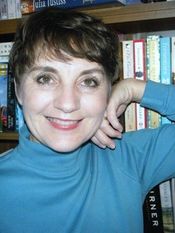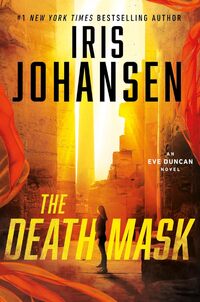Our selections this month are all stories set in the aftermath of World War II, two dealing with women who retrace ground from the war to solve mysteries left after its ending, two that deal with exceptional women whose groundbreaking work was so overlooked few would recognize their names—something that the authors of their stories want to make impossible in future!

We begin with LAST TWILIGHT IN PARIS by Pam Jenoff. During the war, Louise served as a Red Cross volunteer delivering packages to prisoners. Now back in England, a housewife and mother of two, she is catapulted into memories of the past when in a second-hand store, she discovers a necklace she remembers from her war work. Still haunted by the death of her friend Fanny, a death she suspects was not the accident it was reported to be, she returns to Paris to try to find the owner of the necklace—and is flung into the mystery of a famous department store, the Lévitan. Helaine holds another key to the story; exiled from her husband when the Nazis invaded France, along with other Jewish women, she was imprisoned in the store, which the Nazi turned into a storehouse and market for goods confiscated from Jewish homes, forcing prisoners like Helaine to sell the plunder. Using her wartime contacts, Louise tries to track down the necklace’s owner—and uncovers a trail of secrets and betrayal that some will go to any lengths to keep hidden. Jenoff’s story highlights the heroism and the strong bonds that develop between women placed in dangerous and near-impossible situations.

We continue with the story of a woman who actually worked as a spy with UNDER THE PAPER MOON by Shaina Steinberg. During the war, heiress to an aeronautics fortune Evelyn Bishop works in London—supposedly as a translator. In actuality, Evelyn joined the Office of Strategic Services as a spy, using her language expertise to accompany teams to occupied Europe to further her own personal goal—to find her brother, who is being held as a POW in a Nazi labor camp. She becomes particularly close to a fellow team member, the unconventional, risk-taking Nick Gallagher. But a final mission gone wrong will break the bond between them—until six years later, with Evelyn back in Los Angeles working as a private investigator, she encounters Nick again while investigating a well-known businessman whose wife suspects him of adultery. When the subject of her investigation is killed and clues point to that last failed mission, she reluctantly teams up with Nick to learn the truth—no matter how devastating it will prove to be. Steinberg’s action packed tale paints a vivid picture of both war-torn France and post-war LA.

We move now to the post-war world of science to discover the stories of two remarkable but virtually unknown woman. HER HIDDEN GENIUS by Marie Benedict introduces us to Rosalind Franklin, a brilliant scientist who used her expertise with X-rays to take endless pictures, intent on unlocking the secrets of the building blocks of life. Though she worked at a time when female scientists were ignored or denigrated, with scientists like Maurice Wilkins refusing to collaborate with her, Franklin persevered, continuing her innovative and ground-breaking research until she succeeded in revealing the shape of the double helix. But rather than have her discovery celebrated, Watson, Crick and Wilkins, scientists also embroiled in the competition to uncover the secret of DNA, simply took her photos and mathematical work, incorporated it with their own, and then announced the discovery as theirs alone. Not until after her death did Franklin receive the credit due her original discoveries. But recognizing the value of the collaboration she championed enabled some of the scientists with whom she worked to go on to make further significant discoveries of their own.

We finish our post-war glimpses with THE WOMAN WITH THE CURE by Lynn Cullen. Only by recalling the lock downs and world-wide paroxysm of fear over COVID could one appreciate how in 1940s and 50s America, people dreaded polio, a disease that killed or paralyzed its victims, particularly children. Doctors and researchers all over the country competed in a frantic race to identify the cause and discover a cure. Doctor Dorothy Horstmann, daughter of poor immigrants, had no desire to become famous or celebrated; she just wanted to end this curse that killed and crippled children. Giving up the chance to marry and have a family of her own, Horstmann dedicated all her efforts to research, visiting hospital wards, conducting constant testing, weathering failures and continuing on. The excellence of her research caught the attention of famous doctor Jonas Salk who consulted with Horstmann about her theories of how the virus spread and multiplied. Using some of her work, in his second attempt, Salk succeeded in creating an effective vaccine. Though Salk became world famous, Horstmann’s contributions remained uncelebrated for many years, though she continued on to a distinguished career as a professor and researcher.
From post-World War II into the future, this month’s selection of fiction will have you appreciating the abilities of spies in the political world and researchers in the scientific one. The fact that the protagonists are brave and resourceful women makes their stories even more compelling . Enjoy!

Real, intense, passionate historical romance
Award-winning romance author Julia Justiss, who has written more than thirty historical novels and novellas set in the English Regency and the American West, just completed her first contemporary series set in the fictional Hill Country town of Whiskey River, Texas.
A voracious reader who began jotting down plot ideas for Nancy Drew novels in her third grade spiral, Julia has published poetry and worked as a business journalist.
She and her husband live in East Texas, where she continues to craft the stories she loves. Check her website for details about her books, chat with her on social media, and follow her on Bookbub and Amazon to receive notices about her latest releases.
No comments posted.


 © 2003-2025 off-the-edge.net
all rights reserved Privacy Policy
© 2003-2025 off-the-edge.net
all rights reserved Privacy Policy